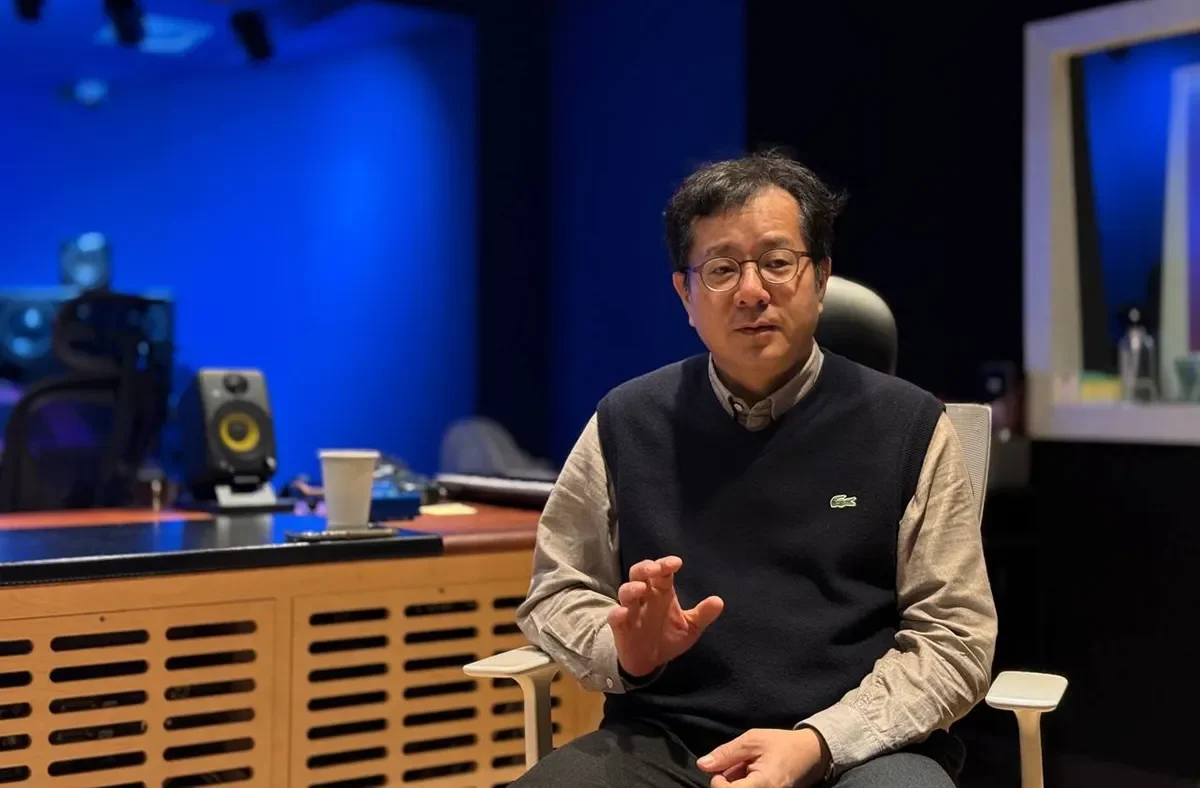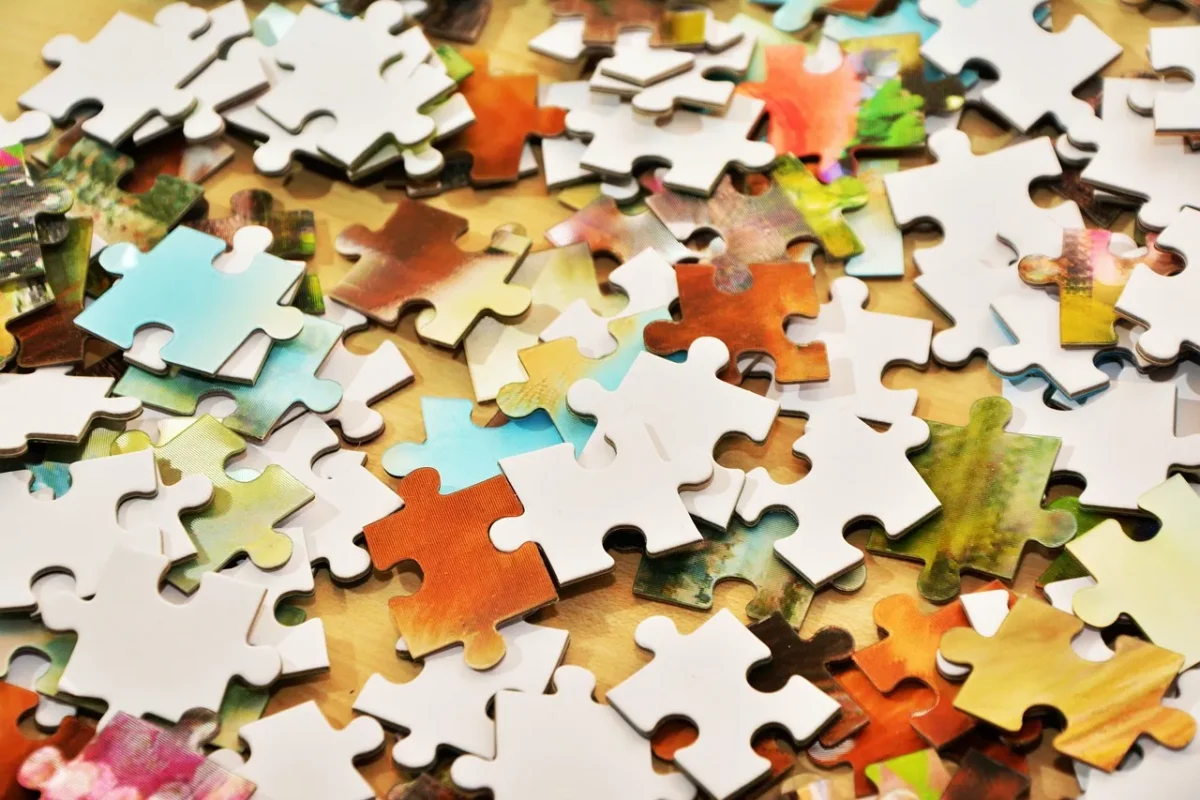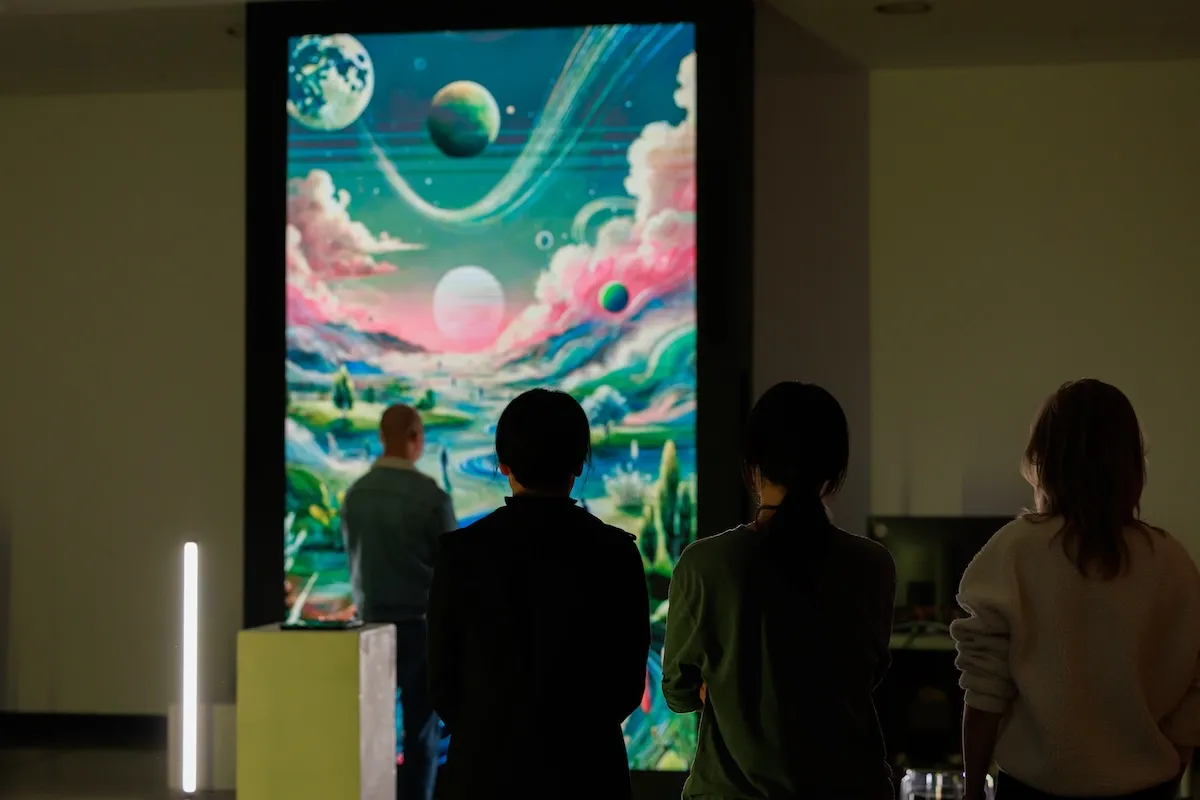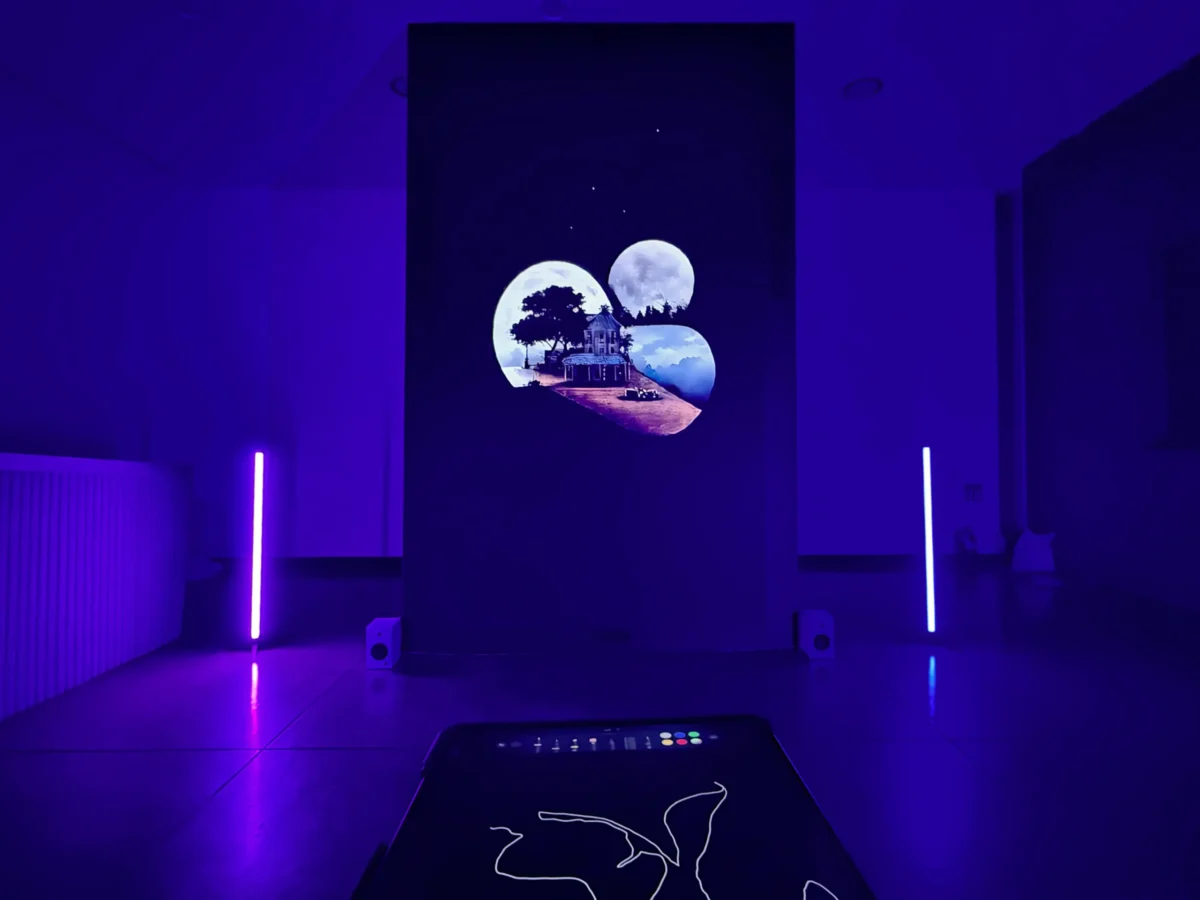| [People]introduces the future direction of art education that the Art Collider Lab (hereinafter referred to as AC Lab) of the Convergence Arts Center seeks and aims to pursue through people who have worked with AC Lab. |
“A deep and broad understanding of music is more important than technical skills.”
This is the essence of recording, according to Jeong-Myun Lee(56), the CEO of EumSound. Operating a recording studio for 14 years as a sound engineer, he doesn’t confine himself to technical perfection. His exploration extends to diverse musical genres, music history, and even disciplines like music psychology. For him, the philosophy of recording seamlessly expands into a philosophy of art. He believes that becoming a great artist requires layering diverse knowledge and experience on top of artistic techniques. Lee explains, “Once a performance reaches a certain level, it needs something beyond technique. Whether it’s philosophy or humanities, expanding one’s thinking is essential for establishing an artistic identity and opening up new opportunities.” This belief led him to develop the course ‘Exercise in Creative Traditional Performing Arts’ as part of the Connected Campus project at the Korea National University of Arts(K-Arts). Through this course, he aimed to broaden students’ perspectives and foster artistic consideration by exposing them to diverse experiences and ‘meaningful dissonance.’

Jeong-Myun Lee, CEO of Eum Sound
| From an Engineering Student to a Recording Studio Owner
Surprisingly, Lee’s journey to music wasn’t direct. Trained as a composer, he pursued both Western and Korean traditional music, studying Western music at university and Korean traditional music in graduate school. He later worked at the National Gugak Center, a leading institution for traditional Korean music, where he composed and arranged music for 9 years.
Despite his accomplished career, Lee was a latecomer to music. He originally studied engineering and even worked in a related field.
Lee recalls, “I’ve loved music since I was young. During my college years, I played guitar and bass in a band. The more I immersed myself in music, the more I felt it was my true calling. Eventually, I couldn’t resist the pull.”
This was no casual decision. Already married, he began preparing to enter music school—a decision that required unwavering determination. Lee reflects, “It took longer than I expected. I ended up spending a decade in music school, exploring everything from classical music to Korean traditional music and even children’s songs.”
His interest in recording technology began during his time at the National Gugak Center. Frequent visits to recording studios for his compositions sparked a fascination that soon evolved into a larger vision. With his engineering background and adaptability to change, Lee’s artistic aspirations became clearer.
He explains, “At first, I studied recording and sound engineering simply to enhance my compositions. But the more I learned, the more I enjoyed it. New opportunities started emerging.”
When Lee decided to transition from being a musician to running a recording studio, it paradoxically enriched his musical career. By working with artists across genres—classical, jazz, traditional Korean music, and popular music—he gained new perspectives on music and art.
Lee says, “Collaborating with musicians from different genres naturally broadened my understanding. Listening to their concerns and finding solutions expanded my knowledge not only of their genres but also of my overall artistic perspective.”

CEO Lee explained, “Recording is a comprehensive art.”
Last spring, Lee taught his course ‘Exercise in Creative Traditional Performing Arts’ at K-Arts’ School of Traditional Arts. In collaboration with the school’s Art Collider Lab, which focuses on the digital transformation and convergence of art education, this course aimed to provide students with experiences to broaden their persepectives. Lee hoped that students primarily focused on performance would think beyond just performing.
| Hands-on Learning: Bridging Art and Technology
The course was structured as a content creation project, where 15 students formed teams to create ‘Yeonhui’ (a form of traditional Korean performance) that included elements of performance and theater, culminating in video content. The emphasis was on students solving tasks independently; they took charge of every aspect of production—from planning and storyboarding to recording and editing.
Lee explains, “The key was having students solve every challenge themselves. They searched for references, planned the videos, and even handled the technical aspects like recording and filming. Though the results may not be perfect, what matters is that they did it all themselves.”
The course’s purpose was clear: to encourage students—who often focus solely on performance—to consider and engage with aspects beyond their instruments. “K-Arts students have such demanding curriculums that they barely have time to think about anything else,” Lee notes. “This can lead to an over-specialization that reduces their exposure to and understanding of other genres, potentially leading to unintended consequences of elite education.”
The course also aimed to prepare students for a media-driven world, where artists inevitably encounter video production. “It serves as a form of preparatory education,” Lee says. “Students gain familiarity with equipment, terminology, and the roles and challenges involved in production. Most importantly, they experience the collaborative process—messy as it may be—which will be invaluable in their future careers.”
The course had problems but no answers. This open-ended approach heightened student engagement. While Lee provided one-on-one mentoring in technical areas like audio and video, students bore full responsibility for their final projects. If students asked, Lee answered with a laugh, “I don’t know either—figure it out yourselves.” This empowered student’s sense of autonomy.
“I still remember the look on a student’s face while holding the slate and clapping it, shouting, ‘Ready, go!’ Their enthusiasm was incredible,” he recalls. “They’d thoroughly prepared for every step, from microphone placement to camera operation. They asked countless questions and eagerly explored new skills.”
One student even asked Lee about the future of recording studios—a seeming minor question, yet one that held deep significance for him. “It’s a sign that their perspective is expanding beyond sheet music,” he notes. “That kind of thinking is exactly what this course aims to foster.”
| Empathy Through Understanding, Understanding Through Experience
Collaboration doesn’t come naturally to many artists. Each strives to be the ultimate expressive force, making teamwork among art students particularly challenging. This is true not only across disciplines like music, visual arts, and video but even within a single genre.
Lee believes the root of the problem is a lack of understanding. “If you try to force classical music and traditional Korean music to align without understanding their unique characteristics, clashes are inevitable. But if you know how they evolved differently—such as how Korean instruments are designed for small spaces—you can find common ground.”
This belief drives Lee’s work with the Art Collider Lab, which focuses on experiential learning rather than polished results. By navigating differences and experiencing other perspectives firsthand, students learn to empathize. “When ignorance is the barrier, simply gaining accurate knowledge can be the foundation for mutual understanding,” Lee says. This is why he views the Connected Campus project as a vital step in teaching artists empathy.
Lee likens his role to that of a seasoning in a dish.
“No one would dispute that K-Arts students are the finest artistic talents,” he says. “But even the best rice, premium meat, and organic vegetables can’t make a proper Bibimbap without the right seasoning. My job is to be the gochujang or sesame oil that helps them blend together harmoniously.”
/ written by TJ
Related Videos



